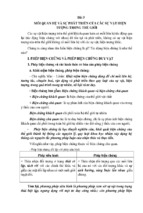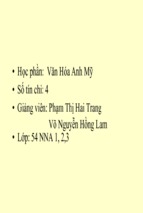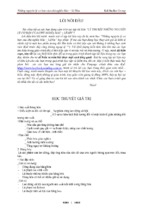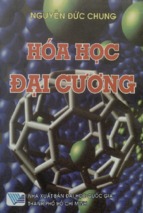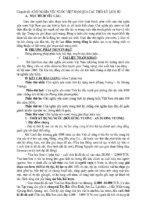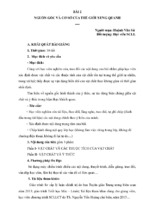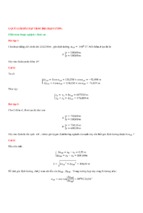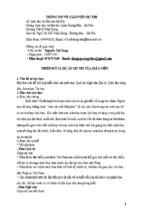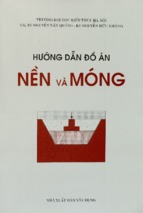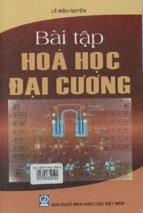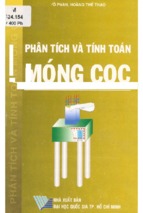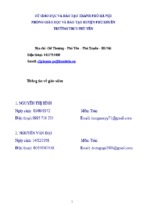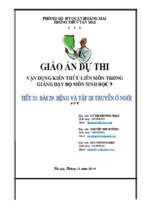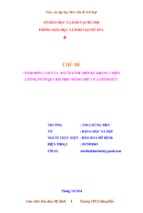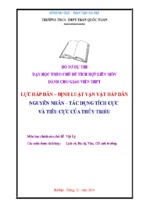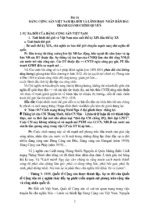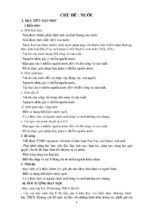Downloaded from ascelibrary.org by RMIT UNIVERSITY LIBRARY on 01/03/19. Copyright ASCE. For personal use only; all rights reserved.
International
Low Impact Development
Conference 2018
Getting In Tune with Green Infrastructure
Proceedings of the International Low Impact Development Conference 2018
Nashville, Tennessee | August 12–15, 2018
Edited by
Jon Hathaway, Ph.D., P.E.
Downloaded from ascelibrary.org by RMIT UNIVERSITY LIBRARY on 01/03/19. Copyright ASCE. For personal use only; all rights reserved.
INTERNATIONAL LOW IMPACT
DEVELOPMENT CONFERENCE
2018
GETTING IN TUNE WITH GREEN INFRASTRUCTURE
PROCEEDINGS OF THE INTERNATIONAL LOW IMPACT
DEVELOPMENT CONFERENCE 2018
August 12–15, 2018
Nashville, Tennessee
SPONSORED BY
Environmental and Water Resources Institute
of the American Society of Civil Engineers
EDITED BY
Jon Hathaway, Ph.D., P.E.
Published by the American Society of Civil Engineers
Downloaded from ascelibrary.org by RMIT UNIVERSITY LIBRARY on 01/03/19. Copyright ASCE. For personal use only; all rights reserved.
Published by American Society of Civil Engineers
1801 Alexander Bell Drive
Reston, Virginia, 20191-4382
www.asce.org/publications | ascelibrary.org
Any statements expressed in these materials are those of the individual authors and do not
necessarily represent the views of ASCE, which takes no responsibility for any statement
made herein. No reference made in this publication to any specific method, product, process,
or service constitutes or implies an endorsement, recommendation, or warranty thereof by
ASCE. The materials are for general information only and do not represent a standard of
ASCE, nor are they intended as a reference in purchase specifications, contracts, regulations,
statutes, or any other legal document. ASCE makes no representation or warranty of any
kind, whether express or implied, concerning the accuracy, completeness, suitability, or
utility of any information, apparatus, product, or process discussed in this publication, and
assumes no liability therefor. The information contained in these materials should not be used
without first securing competent advice with respect to its suitability for any general or
specific application. Anyone utilizing such information assumes all liability arising from such
use, including but not limited to infringement of any patent or patents.
ASCE and American Society of Civil Engineers—Registered in U.S. Patent and Trademark
Office.
Photocopies and permissions. Permission to photocopy or reproduce material from ASCE
publications can be requested by sending an e-mail to
[email protected] or by locating a
title in ASCE's Civil Engineering Database (http://cedb.asce.org) or ASCE Library
(http://ascelibrary.org) and using the “Permissions” link.
Errata: Errata, if any, can be found at https://doi.org/10.1061/9780784481783
Copyright © 2018 by the American Society of Civil Engineers.
All Rights Reserved.
ISBN 978-0-7844-8178-3 (PDF)
Manufactured in the United States of America.
International Low Impact Development Conference 2018
Preface
Downloaded from ascelibrary.org by RMIT UNIVERSITY LIBRARY on 01/03/19. Copyright ASCE. For personal use only; all rights reserved.
The International Low Impact Development Conference was held in Nashville,
Tennessee, in August of 2018. The Proceedings presented here represent a portion of
the timely, innovative, and diverse content that was presented at the conference. The
theme for this event was “Getting in Tune with Green Infrastructure,” so in addition
to sessions focused on research, case studies, and municipal challenges, we
highlighted the social aspects of stormwater management. Sessions associated with
this topic included ways to educate, engage, and incorporate the public in our design
and management programs. The 2018 LID Conference also included a number of
“special sessions” proposed by the community to allow participant input into the
conference program on topics that might be overlooked by the planning committee.
We are excited at the continued interest and growth in Low Impact Development
globally, we hope that these proceedings provide the in-depth information that you
are looking for and look forward to seeing you at the next LID conference in 2019!
Acknowledgments
Preparation and planning are the key to a successfully executed conference, so we
would like to recognize the hard work of the Conference Steering Committee and
also others that are not mentioned here.
Conference Chair
Rebecca Dohn
Metro Water Services, Nashville, TN
Conference Co-Chair
Crystal Bishop
Tennessee Stormwater Association
Technical Program Chair
Jon Hathaway
University of Tennessee Department of Civil and Environmental Engineering
Technical Program Vice Chair
Gale Fulton
University of Tennessee, School of Landscape Architecture
Local Host Chair
Jennifer Watson
Tennessee Stormwater Association
© ASCE
iii
International Low Impact Development Conference 2018
Downloaded from ascelibrary.org by RMIT UNIVERSITY LIBRARY on 01/03/19. Copyright ASCE. For personal use only; all rights reserved.
Committee Members
Michael Clar, Tetra Tech
James Lenhart, Contech Engineered Solutions
Brian Bledsoe, University of Georgia
Robert Traver, Villanova University
Scott Struck, Geosyntec Consultants
Finally, we acknowledge and thank the staff of the EWRI of ASCE, who, in the end,
make it all happen.
Director, EWRI
Brian K. Parsons, M.ASCE
Technical Manager, EWRI
Barbara Whitten
Conference Manager
Mark Gable
Conference Coordinator
Nicole Erdelyi
Sponsorship and Exhibit Sales Manager
Sean Scully
Registrar
Susan Dunne
Conference Scientific Committee
Technical Program Chair: Jon Hathaway, University of Tennessee, Department of
Civil Engineering
Technical Program Vice-Chair: Gale Fulton, University of Tennessee, School of
Landscape Architecture
Bram Barth, Lose and Associates, Inc.
Eban Bean, University of Florida
Brian Bledsoe, University of Georgia
Robert Brown, Ecological Planning Group
Ted Brown, Biohabitats
Kathlie Bulloch, City of Houston, Texas
Karina Bynum, TDEC Water Resources
Michael Clar, Ecosite, Inc.
Jane Clary, Wright Water Engineers
Brad Collett, University of Tennessee, Knoxville
© ASCE
iv
International Low Impact Development Conference 2018
Downloaded from ascelibrary.org by RMIT UNIVERSITY LIBRARY on 01/03/19. Copyright ASCE. For personal use only; all rights reserved.
Rebecca Dohn, City of Nashville, Tennessee
Jay Dorsey, Ohio State University
Hunter Freeman, WithersRavenel
Kathy Gee, Longwood University
Robert Goo, US Environmental Protection Agency
Ruth Hocker, City of Lancaster, Pennsylvania
Bill Hunt, North Carolina State University
Mikael Isensee, Washington Conservation District, Minnesota
Anand Jayakaran, Washington State University
Matthew Jones, Hazen and Sawyer
James Lenhart, Contech Engineered Solutions
Keith Lichten, California Environmental Protection Agency
Kelly Lindow, CityScape Engineering
Bill Lord, North Carolina State University
Andrea Ludwig, University of Tennessee, Knoxville
Susan McCrary, Metropolitan St. Louis Sewer District
Trisha Moore, Kansas State University
Elodie Passeport, University of Toronto
Holly Piza, Urban Drainage and Flood Control District, Denver, Colorado
Saya Qualls, Hazen and Sawyer
Andrew Reese, Wood Group
Amy Rowe, Rutgers University
David Sample, Virginia Polytechnic Institute
John Schwartz, University of Tennessee, Knoxville, Tennessee
David Smith, Interlocking Concrete Pavement Institute
Jonathan Smith, Tetra Tech
Scott Struck, Geosyntec Consultants
Robert Traver, Villanova University
Steven Trinkaus, Trinkaus Engineering LLC
Harris Trobman, University of the District of Columbia
Bridget Wadzuk, Villanova University
Ryan Winston, Ohio State University
Jason Wright, Tetra Tech
© ASCE
v
International Low Impact Development Conference 2018
Downloaded from ascelibrary.org by RMIT UNIVERSITY LIBRARY on 01/03/19. Copyright ASCE. For personal use only; all rights reserved.
Contents
Using a Compact Ceramic System to Filter Raw Water in Iraq: Challenges
and Opportunities ..................................................................................................................... 1
Riyadh J. M. Al Saadi and Ahmed Jalil Al-Bayati
Water Quality Target Assessment Using LID TTT for Better SWM Designs
in Ontario .................................................................................................................................. 7
Steve Auger, Tim Van Seters, Amanjot Singh, and John Antoszek
A 17-Year Performance Evaluation of a LID Subdivision .................................................... 18
Michael Clar
Decentralized Low Impact Development (LID) Practices Addressing the
Security of the Water-Energy-Food Nexus ............................................................................ 30
Marina Batalini de Macedo, César Ambrogi Ferreira do Lago,
Eduardo Mario Mendiondo, and Marcio Hofheinz Giacomoni
The Effects of Climate Change on Low Impact Development (LID)
Performance—A Case of Study in Sao Carlos, Brazil ........................................................... 40
César Ambrogi Ferreira do Lago, Marina Batalini de Macedo,
Eduardo Mario Mendiondo, and Marcio Hofheinz Giacomoni
Precast Concrete and LID: A Super Bowl-Size Case Study .................................................. 46
Claude Goguen
Assessment and Determinants of Residential Satisfaction with Sponge-Style
Old Community Renewal: A Case Study in Zhenjiang, China ............................................. 51
Tiantian Gu, Dezhi Li, and Yanqing Wang
pH Profiles around Pervious Concrete in Fresh Water ......................................................... 64
Qin Qian, Fernando Aleman, Hayden Rice, Andre Trottier, Liv Haselbach,
and Harley Myler
Deicer Impacts on Pervious Concrete Specimens: Phase IIa; Split Tensile
Testing ..................................................................................................................................... 71
L. Haselbach, N. Almeida, and M. Ross
Spatial and Temporal Analysis of Hydraulic Conductivity, Snow Depth,
and Soil Properties of a Bioretention System ......................................................................... 81
Alwish Ranjith John Gnanaraj and Jennifer Drake
Laboratory Study on the Performance of Bioretention for Stormwater
Management in Cold Climates ............................................................................................... 90
Hannah Kratky, Zhan Li, Xiangfei Li, and Tong Yu
© ASCE
vi
International Low Impact Development Conference 2018
Downloaded from ascelibrary.org by RMIT UNIVERSITY LIBRARY on 01/03/19. Copyright ASCE. For personal use only; all rights reserved.
Experimental and Model Study of Road-Bioretention System............................................ 101
Xiaoning Li, Xing Fang, Junqi Li, Jianlong Wang, Nannan Tu,
Qingzhu Yang, Pengshu Li, and Yongwei Gong
Analysis of Low Impact Development Using Continuous Simulation
Hydrologic Modeling............................................................................................................. 110
Patrick L. McMahon, Clive L. Sorhaindo, and William K. Barry
Towards Dual Thinking of Ecology: Raingardens Design in Northern China ................... 119
Xiaoying Meng, Can Wang, and Yubo Zou
Memoir of a Reviewer: The Basics ....................................................................................... 125
Maria E. Price
Water Energy Nexus in the United States and Saudi Arabia Low Impact
Development .......................................................................................................................... 130
Tony Rizk and Mary Rizk
Monitoring Infiltration Movement through the Soil Profile in Urban Rain
Gardens ................................................................................................................................. 140
Matina Shakya, Robert Traver, and Bridget Wadzuk
Community Land Trusts: An Emerging Case Study in Ripple-Effect
Infrastructure Economics ..................................................................................................... 149
Jeremy Stand, Blaine Stand, Tara Stand, and Petr Stand
Community Land Trusts: A New Model for Urban Equity and Environmental
Resilience ............................................................................................................................... 159
Jeremy Stand, Blaine Stand, Tara Stand, and Petr Stand
Improving the Design of Curb Openings in Green Stormwater Infrastructure ................. 168
Sarah Stoolmiller, Ali Ebrahimian, Bridget M. Wadzuk, and Stephen White
Investigating the Impacts of Green Roofs’ Vegetation Properties on Their
Function in Controlling Urban Runoffs ............................................................................... 176
Mohammadsoroush Tafazzoli
Enhancing the Functionality of Pervious Concrete Pavements through Design
and Maintenance ................................................................................................................... 184
Mohammadsoroush Tafazzoli
Canadian Low Impact Development Retrofit Approaches: A 21st-Century
Stormwater Management Paradigm .................................................................................... 193
W. R. Trenouth and W. K. Vander Linden
Understanding the Roles of Biodiversity and Functional Diversity in Provision
of Co-Benefits by Stormwater Biofilter Plant Communities ............................................... 203
B. K. Winfrey, E. G. I. Payne, and R. F. Ambrose
© ASCE
vii
International Low Impact Development Conference 2018
Novel Irrigation Technologies for Urban Landscaping ....................................................... 213
Wei Zhang, Uriel Akiva, and Hailing Yang
Downloaded from ascelibrary.org by RMIT UNIVERSITY LIBRARY on 01/03/19. Copyright ASCE. For personal use only; all rights reserved.
Performance Evaluation of Combined LID Facilities on Runoff Reduction—A
Case of Taipei Tech Campus in Taiwan ............................................................................... 223
Chi-Feng Chen, Jen-Yang Lin, Chia-Chun Ho, and Chao-Ting Kuo
LID Practices for Reservoir Water Quality Management: Case Studies in
Taiwan ................................................................................................................................... 230
Jen-Yang Lin, Shyh-fang Kang, Wen-Yi Wei, and Shaw L. Yu
© ASCE
viii
International Low Impact Development Conference 2018
Using a Compact Ceramic System to Filter Raw Water in Iraq: Challenges and
Opportunities
Riyadh J. M. Al Saadi, Ph.D.1; and
Ahmed Jalil Al-Bayati, Ph.D., P.E., M.ASCE2
Downloaded from ascelibrary.org by RMIT UNIVERSITY LIBRARY on 01/03/19. Copyright ASCE. For personal use only; all rights reserved.
1
Lecturer, Dept. of Civil Engineering, College of Engineering, Kerbala Univ., Iraq. E-mail:
[email protected]
2
Assistant Professor, Kimmel School of Construction Management, Western Carolina Univ.,
Cullowhee, NC 28723, U.S. E-mail:
[email protected]
ABSTRACT
Filtering of raw water for drinking purposes is limited in rural areas in Iraq. The limitation is
mainly due to technical and logistical difficulties of the traditional method, as well as high initial
and operation costs. Therefore, a less complicated system is needed to overcome this problem.
As a result, a laboratory size compact ceramic system has been designed, constructed, and
extensively tested. The system mainly consists of a reservoir and two modules of rotating
ceramic discs. The discs have been made from red clay, sawdust, and water. The laboratory
results suggest the proposed system could be used in water filtration. This system can be
continuously operated with a constant flow rate and does not need the primary sedimentation
water tanks that are typically used in the traditional method. The proposed system can be
manufactured with different filtration capacities to satisfy the needs of the served areas; however,
a large filtration capacity system has not been tested previously. A large capacity filtration
system could help humanitarian aid organizations and military units since it is easy to transport
and install. The study discusses the design and cost of manufacturing large capacity systems, and
compares the finding with traditional filtration systems. This study also reviews the potential
advantages of using the proposed system in rural areas in Iraq, as well as the challenges.
INTRODUCTION
Most rural regions in the world suffer from deficient water. The availability of potable water
is a challenge in most rural and remote regions due to the fact that there are no existing
traditional water treatment systems (TWTS) in these areas. Traditional water treatment systems
that use surface water are usually fixed and expensive to build and maintain. These plants consist
of the following components: surface water steel intake structure, sedimentation tank, filtration
tank, alum mixer and tank (i.e., flocculating tank), and chlorination system, see Picture 1.
Several studies have been carried out to improve current filtration systems, as well as propose
new systems. Al-Kathily (2014), for example, conducted an empirical study aimed to eliminate
sedimentation phase from TWTS. Al-Kathily built a laboratory direct filtration unit that includes
four main units: an axial flocculating unit, a filtration unit, injection unit for pumping coagulants
and clay materials, and a backwashing unit. In another study, Mahanna et al. (2015) constructed
an experimental pilot plant to improve turbidity removal and developed a simple regression
model between turbidity and the sand filter’s depth. The results of the proposed model showed a
good correlation (r2 = 0.88) within the observed data, indicating that the most significant
parameters that affect turbidity are sand media depth and filtration rate.
© ASCE
1
Downloaded from ascelibrary.org by RMIT UNIVERSITY LIBRARY on 01/03/19. Copyright ASCE. For personal use only; all rights reserved.
International Low Impact Development Conference 2018
2
Sedimentation Tank
Intake Structure
Sand Filters (Filtration Tank)
Alum Dosing Tanks, Mixers &
Pumps
Backwash Valves
Chlorination System
Picture 1. TWTS components – Babil Province, Iraq
Somewhat differently, several studies have investigated the use of ceramic filters (CF) due to
their availability and initial low cost. Jassim (2010) conducted a study on water filters made from
Iraqi local ceramic materials with different additives. The study found that all produced ceramic
filters have high removal efficiency of suspended materials. On another study, Musa (2010)
investigated the advantage of adding sawdust to the ceramic filter’s components in order to
increase its porosity. The results indicated that adding sawdust could improve filtration up to a
© ASCE
Downloaded from ascelibrary.org by RMIT UNIVERSITY LIBRARY on 01/03/19. Copyright ASCE. For personal use only; all rights reserved.
International Low Impact Development Conference 2018
specific percentage; filtration capability drops after that. In yet another study, Al Zubaidy et al.
(2017) investigated the use of a rotating ceramic discs (RCD) system. The research team
designed, constructed, and operated a laboratory scale ceramic water filter to examine the
efficiency of RCD as a medium for water filtration. Ceramic water filters made of two different
mixtures, as well as two rotating interfered modules, were tested. The main objective of rotating
modules was to generate shear force between water and the surfaces of discs to reduce the
thickness of the layer of rejected materials on the filter’s surface. The experimental study showed
that the resulting thinner layer of rejected material improved the filtration process. This paper
will also discuss the design, advantages, and challenges of a rotating disc system.
Figure 1. A schematic diagram of the water filtration system
(Credit: Al Zubaidy et al. (2017))
WATER FILTRATION SYSTEM DESIGN
The system in the current study consists of a storage tank, filtration tank, two ceramic
filtration modules, backwash tank, two treated water storage tanks, peristaltic pump, and an
electrical control board, see Figure 1. The dimensions of the storage tank are 34 cm width, 66 cm
length, and 34 cm depth. The tank is supplied with raw water through a pipe of 12 mm inner
diameter. The water flow to the tank is controlled by an electrical float valve used to preserve a
water head of 30 cm. Four submersible water pumps are used to circulate raw water in order to
prevent settling of the suspended materials. The storage tank supplies raw water to the filtration
tank. The filtration tank is the main unit of filtration system of the RCD. A drainpipe of 50 mm
fixed at the bottom of the filtration tank is controlled by a mechanical valve to wash or empty the
© ASCE
3
Downloaded from ascelibrary.org by RMIT UNIVERSITY LIBRARY on 01/03/19. Copyright ASCE. For personal use only; all rights reserved.
International Low Impact Development Conference 2018
filtration tank, and is also used for taking samples. The filtration tank consists of two rotating
interfered modules. Each module has seven filtration units. Each unit is constructed from two
discs separated by a PVC ring of 3 mm, see Picture 2. Disc dimensions are 12 cm diameter and
2.5 mm thickness. A pipe with holes at each filter unit is used to fix these units and to collect the
filtered water from each unit. The pipe dimensions are 20 mm outer diameter and 12 mm inner
diameter. The discs of the first module were made of mixture 90% red clay and 5% sawdust with
10% water by weight formed under a press pressure of 40 MPa and a firing temperature of
1070˚. The discs of the second module were made of mixture 92.5% red clay and 7.5% sawdust
with 10% water by weight formed under a press pressure of 20 MPa and a firing temperature of
1070˚C. A synthetic raw water of total suspended solids ranging between 500 and 7000 mg/l
were used to test both modules. The results showed that the average measured hydraulic
conductivity of the first module was 13.7 mm/day and was 50 mm/day for the second. In
addition, the results also indicated that both modules have high removal efficiency of total
suspended solids up to 100%, and turbidity up to 99.94%. The experiment suggests that RCD
could produce a constant flow rate of purified water.
A motor was used to rotate RCD at rate of 15 rpm. The rotating provides an unsuitable
environment for micro-organism growth and reduces the thickness of the accumulated rejected
materials by the filters. Backwashing is necessary to remove the rejected material within and
over the ceramic filter during operation. The backwash tank has a square base of 32×32 cm and a
depth of 28c m. The backwash process is carried out by a pump that operates at a maximum rate
of 20l/min and a minimum rate of 8l/min. The filtration system is supplied by two treated water
storage tanks of 17.5 cm width, 21 cm length, and 16 cm depth. Each tank receives treated water
from one filtration module. Each tank has a tap of 12 mm diameter that is used for water
sampling.
Picture 2. The filtration modules (Credit: Al Zubaidy et al. (2017))
CHALLENGES AND OPPORTUNITIES
An RCD water filtration system can be constructed on a large capacity scale containing one
filtration tank with multiple interfered RCD units. The numbers of modules and ceramic filter
discs used depend on the size of the water filtration tank. The main advantage of the large
capacity system is the expected low cost due to the availability of raw material, as well as the
© ASCE
4
Downloaded from ascelibrary.org by RMIT UNIVERSITY LIBRARY on 01/03/19. Copyright ASCE. For personal use only; all rights reserved.
International Low Impact Development Conference 2018
fact that a sedimentation tank will not be required. Moreover, this system can be constructed to
be portable and easy to move from place to another, which represents a high advantage when
compared to a traditional system. In addition, the proposed system can be continuously operated
using a constant flow rate. The rejected materials reach a steady thickness so that the system can
be operated continuously without a need for periodic cleaning and maintenance, which requires
additional cost and time. On the contrary, traditional systems require primary stages before
filtration, and operate with a need to periodically be completely stopped for cleaning and
maintenance. Finally, the system has a high removal efficiency of total suspended solids up to
100%, and of turbidity up to 99.94%.
Construction of water treatment plants in Iraq is managed by the government. Recently, Iraqi
government has invested in employment of additional staff and building. Funding a research
study to develop a new filtering system is not an interest. There are many reasons as why it’s
difficult to adopt new system such as organizational risks, approval process, and technology risk
(West et al. 2016). As a result, testing a large-scale RCD system is a real challenge. Accordingly,
it is not expected to see RCD systems operating in needed areas any time soon. Municipality
operating systems and equipment used in Iraq are normally tested and manufactured outside of
Iraq; however, given the results of this study, the authors hope interested researchers and
agencies who are able to secure the needed funds will conduct field experiments on a large-scale
RCD system.
CONCLUSIONS
An RCD system has many advantages over traditional methods, which makes it more
practical to be used in needed regions of Iraq. The raw material of the proposed system are
widely available across Iraq, and their prices are also available at low cost. The main advantages
of the system over the traditional system are: (1) there is no need to have a preliminary
sedimentation tank, and (2) the system can be continuously operated with a constant flow rate
without requiring a complete stop for cleaning and maintenance. In addition, the proposed
system can be manufactured as a portable unit, which makes it an efficient solution for refugee
camps in the Middle East. However, a large-scale field experiment does not seem feasible at the
current time due to research environment and political conditions in Iraq. In addition, the
adoption of this system requires awareness and a lot of education, which is not feasible as well
due to a lack of funds. Therefore, nonprofit organizations and investors seem to be the only
possible resource to carry out a field experiments that may lead to adapting the proposed system.
REFERENCES
Al Zubaidy, R. Z., Al-Khafaji, M., Al-Saadi, R. J. M. (2017) “ Rotating Ceramic Water Filter
Discs System for Water Filtration.” Journal of Engineering, 23, 59–78.
Al-Kathily, F. (2014). “Direct Filtration for Drinking Water, Habbaniyah Lake (Iraq).” Global
Journal of Researches in Engineering Civil and Structural Engineering, 14(2), 1–13.
Jassim, S., Abdul-Razak, 2010, Evaluation of Water Purifier Cartridge Made of Local Ceramic
Materials, Ph.D. dissertation, Department of Water Resources Engineering, College of
Engineering, University of Baghdad, Iraq.
Mahanna, H., Fouad, M., Radwan, K., Elgamal, H. (2015). “Predicting of Effluent Turbidity
from Deep Bed Sand Filters Used in Water Treatment.” International Journal of Scientific &
Engineering Research, (6) 9, 621- 626.
Musa, K., 2010, Performance of Ceramic Water Filters Made from Selected Uganda Clays for
© ASCE
5
International Low Impact Development Conference 2018
Downloaded from ascelibrary.org by RMIT UNIVERSITY LIBRARY on 01/03/19. Copyright ASCE. For personal use only; all rights reserved.
Point-of Use, M.Sc. thesis, The Graduate School, Makerere University, Uganda.
West, C., Kenway, S., Hassall., M., and Yuan, Z. (2016). “Why do Residential Recycled Water
Schemes Fail? A Comprehensive review of Risk Factors and Impact on Objectives,.” Water
Res, 102, 271–281.
© ASCE
6
International Low Impact Development Conference 2018
Water Quality Target Assessment Using LID TTT for Better SWM Designs in Ontario
Steve Auger1; Tim Van Seters2; Amanjot Singh3; and John Antoszek4
Downloaded from ascelibrary.org by RMIT UNIVERSITY LIBRARY on 01/03/19. Copyright ASCE. For personal use only; all rights reserved.
1
Lake Simcoe Region Conservation Authority, 120 Bayview Pkwy., Newmarket, ON L3Y 3W3.
E-mail:
[email protected];
[email protected]
2
Toronto and Region Conservation Authority, 101 Exchange Ave., Vaughan, ON L4K 5R6.
E-mail:
[email protected];
[email protected];
[email protected]
3
Credit Valley Conservation Authority, 1255 Old Derry Rd., Mississauga, ON L5N 6R4. E-mail:
[email protected];
[email protected]
4
Ontario Ministry of the Environment and Climate Change, Foster Bldg., 9th Flr., 40 St. Clair
Ave. W., Toronto, ON M4V 1M2. E-mail:
[email protected]
ABSTRACT
The Toronto and Region Conservation Authority, Lake Simcoe Region Conservation
Authority, and Credit Valley Conservation Sustainable Technologies Evaluation Program
collective within the Greater Toronto Area will present on the capabilities of the low impact
development treatment train tool (LID TTT) to provide water quality [total suspended solids
(TSS) and total phosphorus (TP)] target assessments. The targets are established by the
regulatory agencies. The LID TTT calculates TSS and TP load reduction achieved from runoff
volume reduction and LID filtration. The land cover based concentrations are used to estimate
TSS and TP loading to the receiving LID(s) and LID removal efficiencies are used to estimate
their load reductions from filtration. The tool provides default concentration and removal
efficiency values, which can be edited by the user if the relevant agencies support different
values. This presentation and paper will provide the water quality calculation methodology,
results from a case study highlighting the water quality target assessment, and validation using
monitored data from the case study sites. Based on the results and continued monitoring and
research, recommendations for continued study and refinement of the land cover-based TSS and
TP concentration and LID removal efficiency defaults for LID TTT Version 2.0 (+) will also be
highlighted.
KEYWORDS: Low Impact Development; Treatment Train; Preliminary Design; Modeling;
Stormwater Volume Retention; Infiltration; Water Balance; Total Phosphorus Reduction; Total
Suspended Solids Reduction; Water Quality Targets; Phosphorus Offsetting
1.0 INTRODUCTION
The Low Impact Development Treatment Train Tool (LID TTT) has been developed by Lake
Simcoe Region Conservation Authority (LSRCA), Credit Valley Conservation (CVC) and
Toronto and Region Conservation Authority (TRCA) Sustainable Technologies Evaluation
Program (STEP) collaborative within the Greater Toronto Area, along with technical oversight
and partial funding support from the Ontario Ministry of the Environment and Climate Change
(MOECC). The LID TTT is a tool to help developers, consultants, municipalities and landowners
understand and implement more sustainable stormwater management (SWM) planning and
design practices in their watersheds.
1.1 SWM Quality Targets in Ontario
Stormwater quality targets have been set in Ontario to address aquatic habit preservation
© ASCE
7
International Low Impact Development Conference 2018
and/or restoration needs in receiving water, as mandated by the federal Fisheries Act (Subsection
36(3)) that prohibits the deposit of deleterious substances in water (MOECC, 2003).
Downloaded from ascelibrary.org by RMIT UNIVERSITY LIBRARY on 01/03/19. Copyright ASCE. For personal use only; all rights reserved.
Total Suspended Solids Level of Protection (MOECC)
The latest MOECC SWM Manual released in 2003 stipulates the following long-term
average total suspended solids (TSS) removal protection levels:
Enhanced (previously referred to as Level 1) corresponding to average removal of 80%
TSS;
General (previously referred to as Level 2) corresponding to average removal of 70%
TSS; or
Basic (previously referred to as Level 3) corresponding to average removal of 60% TSS.
For areas that have not done detailed studies to determine performance criteria for
stormwater management facilities the MOECC SWM Manual provides storage volume
requirements based on impervious area for SWM feature types (i.e., infiltration, wetlands, hybrid
wet pond / wetland, wet pond, and dry ponds).
Total Phosphorus Targets
Studies evaluating wet pond or pond/wetland systems for TSS control typically showed a 4050% removal for total phosphorus (TP) (MOECC, 2003).
TP targets in Ontario vary between different jurisdictions, with specific considerations for
local receiving water capacity for TP levels, based on known information including the
Provincial Water Quality Objectives (PWQOs) for TP of 0.02 mg/L for lakes and 0.03 mg/L for
streams. However, with the above correlation between TSS and TP in mind, Conservation
Authorities (CAs) have defined their own specific targets for TP. Some highlights from the
Greater Toronto Area (GTA) CAs are highlighted below.
Lake Simcoe Zero TP Export Policy
LSRCA’s Zero TP Export Policy is the target that drives the Lake Simcoe Phosphorus
Offsetting Program. As new urban growth occurs, phosphorus loads will be controlled to the
maximum extent possible. Any remaining stormwater phosphorus that cannot be controlled
would require an “offset" to achieve a zero net target.
This policy was approved by the MOECC through amendment to the Ontario Water
Resources Act (75.1.7) that supports water quality trading including ‘(b) parameters to which
water quality trading applies’. The Zero TP Export Policy now supersedes the LSRCA’s
Technical Guidelines for SWM Submissions that stipulates the removal of 80% of the annual TP
load from all major development areas will be required.
Other CAs Additional Quality Control Criteria
A minimum requirement for other watershed jurisdictions for stormwater quality control is
captured through enhanced level of water quality protection, as highlighted above in the TSS
section. It is acknowledged in both TRCA’s and CVC’s SWM Criteria documents (TRCA, 2012;
CVC, 2012) that this target may be superseded by the results of additional studies and/or
municipal requirements. Sites draining to Lake Wilcox within the Town of Richmond Hill must
consider phosphorus removal as part of the treatment strategy is one example of a municipal TP
requirement.
© ASCE
8
Downloaded from ascelibrary.org by RMIT UNIVERSITY LIBRARY on 01/03/19. Copyright ASCE. For personal use only; all rights reserved.
International Low Impact Development Conference 2018
Table 1: Land Cover Default EMCs
Land Cover
TSS (mg/L) TP (mg/L)
Paved Surface 1
90
0.23
2
Roof
7
0.09
Landscaped Area 3
100
0.32
4
Row Crop
100
0.23
4
Open Space/Parkland
27
0.20
Forest 4
55
0.23
4
Wetland
13
0.81
Data sources:
1. STEP/TRCA and CVC water quality data from various public road and private parking lot sites in the GTA. A
conservative value for asphalt would utilize the average of the 75th percentile values. These concentrations for TP
and TSS are 0.23 and 90 mg/L, respectively, and are consistent with other northern US studies cited. Recommended
for use with parking lots and/or arterial roadways.
2. STEP water quality data from four local roof runoff studies. Utilizing the 75th percentile values, conservative TP
and TSS values for roof runoff in the LID TTT are 0.09 and 7 mg/L respectively.
3. The landscaped area data are from experimental soil plots designed to evaluate feasible alternatives to standard
topsoil management practices in new residential developments. As a conservative value, we recommend using the
75th percentile values for TP from a compost amended plot with the addition of 15% for potential synthetic fertilizer
applications by property owners or landscape professionals. The TSS EMC default for this land cover has been
assigned based on a general correlation only.
4. International Stormwater BMP Database (2018).
1.2 Overview of Stormwater Quality Computations in LID TTT
The LID TTT using the Stormwater Management Model Version 5 (SWMM5) software
program developed by the United States - Environmental Protection Agency (EPA) can be
utilized to develop stormwater quality (TSS and TP) predictive routines to address post
development SWM quality targets for design consideration. At this stage, as the LID TTT gains
a practitioner audience and support from varying approval agencies, the acceptance of the
computational results to support meeting targets is at the discretion of the approval
representative.
The LID TTT is also used to provide a preliminary water budget to determine the amount of
runoff volume that will be reduced through infiltration, evapotranspiration, or re-use. The water
budget calculation is based on site conditions (including soil texture and vegetation cover), best
management practice (BMP) design (including impervious to pervious area ratio, underdrain
configuration, and storage available for re-use), drainage area treated by LID, and other site
specific factors. As highlighted by Graham et al., 2004, more accurate representation of water
balance modelling has numerous benefits for the transition to LID, including more accurate
water quality computational results.
2.0 WATER QUALITY PARAMETER INPUT AND COMPUTATIONS
The LID TTT provides concentration and load based water quality results. Influent
concentrations are obtained from default or user defined event mean concentrations (EMCs) for
selected land cover types. EMCs for different land covers within a catchment draining to a
stormwater BMP are area weighted by the tool to arrive at an overall influent EMC for the
catchment. An option is provided in the tool to input a land use EMC for the catchment rather
than using the default land cover EMCs. This feature permits the user to adjust the area weighted
© ASCE
9
International Low Impact Development Conference 2018
Downloaded from ascelibrary.org by RMIT UNIVERSITY LIBRARY on 01/03/19. Copyright ASCE. For personal use only; all rights reserved.
EMC to account for lower runoff generation from pervious areas, where appropriate.
Table 2: LID/BMP Concentration Based Removal Efficiencies for TP and TSS
LID/BMP
TSS Removal Efficiency TP Removal Efficiency
(%) 1
(%) 1
Bioretention 2
75
25
Permeable Pavement
75
60
3
Infiltration/Exfiltration Systems
75
60
Vegetated Filter Strips / Buffer
30
20
Strips
Enhanced Swales
40
25
Green Roofs
0
-45
Sand or Media Filters
75
40
Specialized Phosphorus Media
75
70
Filters
Wet Retention Ponds
80
60
Dry Detention Ponds
60
20
Constructed Wetland
80
60
Oil Grit Separator
50
0
Data sources:
1. Performance monitoring studies conducted by GTA CAs; International Stormwater BMP Database.
2. Includes dry swales, planter boxes and bioswales.
3. Includes infiltration trenches, infiltration chambers and soakaway pits.
Concentration based removal efficiencies for stormwater BMPs are set as default, which
could be modified by the user. The tool applies the removal efficiencies to the influent EMC to
generate effluent EMCs for selected BMP types. The land cover hydrologic characteristics are
captured in part by the Curve Number (CN) value assigned to each subcatchment area, along
with the percentages of varying land cover and associated pervious and impervious percentages
within each subcatchment. This input will also influence the load based results, since it will
influence the runoff volume generated for each land use area.
More details on the EMCs and removal efficiencies, along with the computational procedures
to produce concentration and load based TSS and TP results, are provided in the following
subsections.
2.1 Land Cover Event Mean Concentrations
The LID TTT provides the user with default land cover EMCs as shown in Table 1 below,
along with an ‘Other’ land use option that provides flexibility for either additional land cover
options, modifications to the land cover EMC defaults, and/or mixed land use EMCs.
2.2 LID/BMP Removal Efficiencies
The LID/BMP removal efficiencies for TSS and TP were selected for each LID depending on
the filtration or detention mechanism involved.
STEP performed a technical review of the various water quality monitoring results for a
number of study sites throughout the GTA to validate the default values for TSS and TP
concentration-based removal efficiencies selected for the various LIDs and BMPs highlighted
© ASCE
10
Downloaded from ascelibrary.org by RMIT UNIVERSITY LIBRARY on 01/03/19. Copyright ASCE. For personal use only; all rights reserved.
International Low Impact Development Conference 2018
above. The median influent and effluent concentrations from the sample size for each type of
LID/BMP were used to determine a removal efficiency to recommend. This analysis also used
data from the United States BMP database (reference) to support these values and any fine
tuning needed. These default values have been vetted with both the MOECC and GTA CAs
Technical Review Managers.
The removal efficiencies provided in this section only consider removal from filtration and
do not include removal by an LID/BMP due to volume reduction.
It is recognized that these efficiencies are still known to be highly variable due to a number
of influences, including seasonal variations in loading, rainfall-runoff response time, intensity,
and associated energy that affects the feature’s removal capabilities. Therefore, it is important for
the practitioner to present the default values or any modifications to these defaults with the
relevant approval agencies, for acceptance ahead of project submission.
2.3 Specific Stormwater Quality Computations in LID TTT
Contaminant loads are calculated as the product of runoff volume and respective EMCs. The
influent load is calculated from the area weighted influent EMC for the catchment multiplied by
the catchment runoff volume. The effluent load is calculated as the product of the effluent EMC
for the selected BMPs and the model generated effluent volumes, which are reduced based on
modeled water losses through the BMP from infiltration and/or evapotranspiration. Load based
removal efficiencies are calculated as the influent load minus the effluent load, divided by the
influent load.
When stormwater BMPs are placed in series, the influent EMC and influent load for the
downstream BMP is generated from the effluent EMC and effluent load from the upstream BMP.
Therefore, water quality is improved as runoff travels from upstream to downstream BMPs.
Equation 1 –Weighted Catchment EMC
n
EMC Land Cover Area Land Cover
mg
EMC Catchment
Area Total
L Land Cover 1
Equation 2 – Catchment Loadings from Area-Weighted Mixed Land-Use EMC
mg
( EMC catchment
Runoff Volume catchment L )
L
Catchment Loading kg
106
Equation 3 – Outflow EMC
mg
mg
EMC Effluent
EMC Catchment
1 removal efficiency
L
L
Equation 4 – Effluent Loading
mg
( EMC Effluent
EffluentVolume L )
L
Effluent Loading kg
106
2.4 Water Balance relationship with Water Quality Computations
The Water Balance results in the LID TTT for a given annual or event based scenario,
provides rainfall, infiltration, evapotranspiration, and outflow volumes. LID TTT uses the
SWMM5 engine to estimate the values in the water balance with the following results
© ASCE
11

